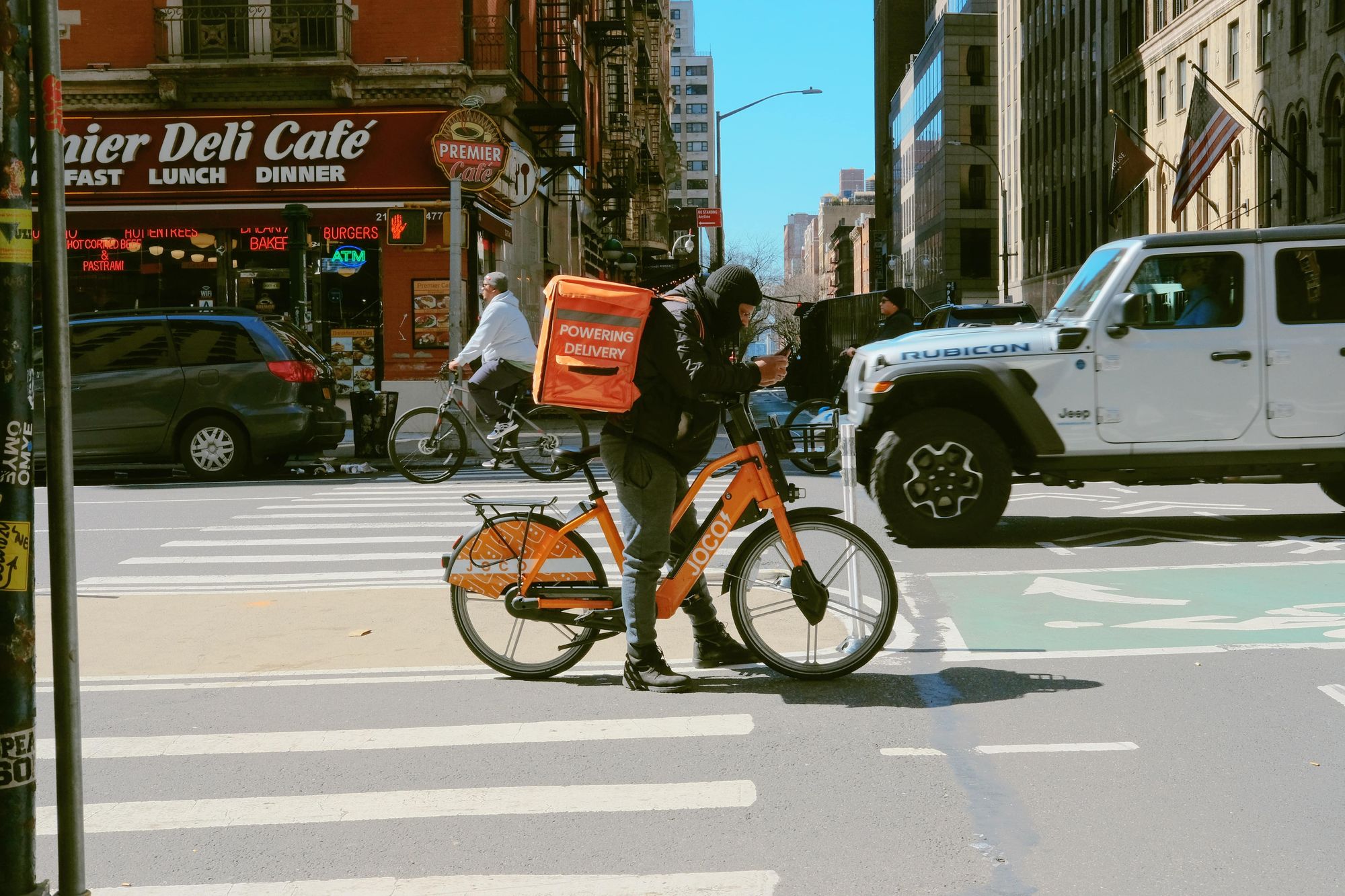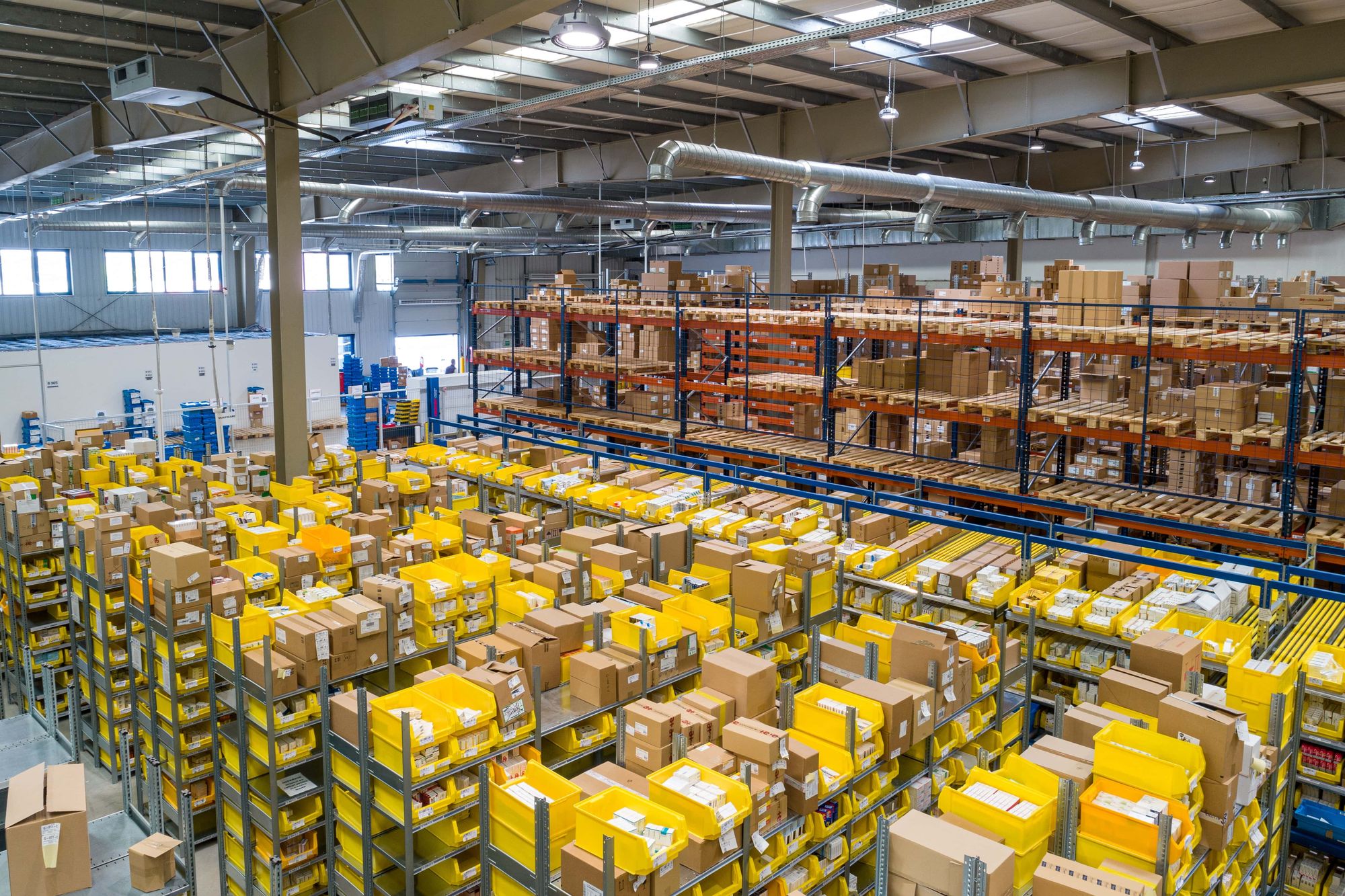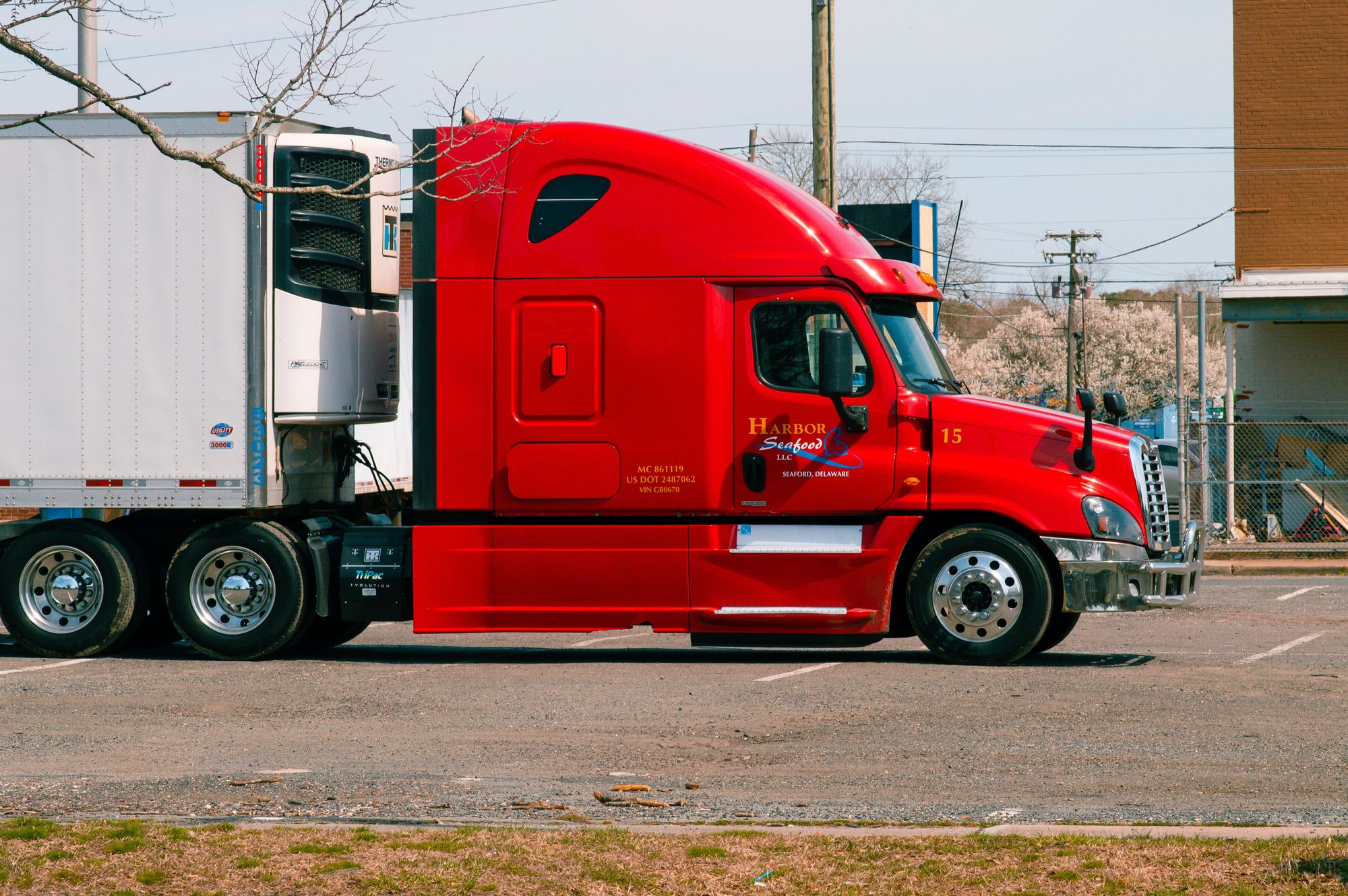In the vast and interconnected world of global commerce, the movement of goods from origin to destination is the lifeblood that fuels delivery operations. However, this logistical journey isn't a singular, straightforward process but rather a series of three interconnected stages - from when an order is placed to the customer receiving their package and leaving a review.
We’ve talked about last mile delivery plenty, but each stage is crucial, carrying its own set of complexities and challenges. Together, we'll uncover the differences between these stages, explore each in-depth, and examine the hurdles they face in ensuring a smooth supply chain flow.

What are the Three Stages of Delivery?
In the realm of supply chain logistics, these three stages play specific roles.
The "First Mile" refers to the beginning of the delivery journey, where goods are collected from producers or manufacturers. It encompasses the initial stage of the logistics chain, including the collection, packaging, and initial transportation of goods.
Nestled between the beginning and ending stages is the "Middle Mile." It serves as a vital link that connects the first and last mile delivery steps, involving the transportation of goods from local hubs to regional distribution centers. This phase often covers long distances, even crossing international borders, and ensures timely and efficient delivery of goods.
Last but not least, the "Last Mile" signifies the journey's final stretch. This is where goods are transported from the local distribution center to the end consumer. It is the concluding point of contact in the logistics chain and significantly influences the consumer's experience, making it a critical element of customer satisfaction.
By understanding the unique characteristics of each stage, businesses can optimize their operations to create a seamless and efficient supply chain.
First Mile Delivery
The first mile delivery process, although often overlooked, serves as the crucial launchpad for the entire supply chain journey. It begins with collecting goods from the producers or manufacturers and involves their packaging and the initiation of their transportation.
In this phase, the goods might range from raw materials gathered for production to the finished products freshly off the production line. Once collected, these goods are appropriately packed to prevent damage during transit, then loaded onto vehicles for the initial leg of their journey.

Accuracy and efficiency are paramount in the first mile stage. Getting the right goods in the correct quantities and safely ready for transit is vital. Any mistakes made here, like incorrect picking or packaging, can ripple throughout the entire supply chain, leading to costly errors, delays, and even damaged goods.
Moreover, the first mile also involves integrating information systems for documentation and tracking. Detailed records of the goods – their type, quantity, destination, and expected delivery time – are recorded. This information plays a key role in coordinating the subsequent stages of the supply chain.
The first mile is an integral part of the logistics chain as it sets the pace for the rest of the journey. A smooth first mile delivery process lays a strong foundation for the middle and last mile processes, helping to ensure an efficient and streamlined supply chain.
Middle Mile Delivery
Though often overshadowed by the more commonly discussed first and last mile, the middle mile plays an absolutely vital role in the supply chain journey. It is the critical bridge connecting the initial and final stages of the delivery process, ensuring that the goods make their way efficiently and safely from the local hubs to regional distribution centers. This stage is also where goods usually cover the most distance, often crossing various regions, states, or international borders.
Unlike the first mile, which deals with individual producers or manufacturers, or the last mile, which focuses on individual customers, the middle mile concerns itself with bulk transportation. This phase handles large quantities of goods, often consolidated from various first mile sources, and ensures their transportation to the distribution centers, where they will later be divided for last mile delivery.

Given its scope, the middle mile often involves coordinating various modes of transportation: road, rail, air, or sea. The chosen mode ultimately depends on the distance, the nature of the goods, and the delivery timeline. A well-executed middle mile process must balance speed, cost, and safety effectively.
The middle mile stage also involves dealing with various legal and geopolitical considerations. This could mean customs clearances in the case of international shipping or dealing with regional laws and regulations for transportation and logistics.
The middle mile, with its complexities and scale, heavily impacts the efficiency of the overall supply chain. Any delays or mishaps here can disrupt the entire chain, underlining the importance of this often underappreciated stage. It requires strategic planning, efficient execution, and a high level of coordination to ensure the goods reach the last mile delivery point on time and in the right condition.
Final Mile Delivery
The last mile signifies the final leg of the logistics journey, bringing goods from the local distribution center to the consumer's doorstep. Despite its name, the last mile can span a significant distance, but it remains the final touchpoint where the supply chain interacts directly with the customer.
The last mile process begins when goods are sorted at a local distribution center based on their final destinations. From here, they are loaded onto delivery vehicles for dispatch. These vehicles follow specific routes optimized for speed and efficiency, often leveraging advanced technologies for real-time tracking and route optimization.
Unlike first and middle mile delivery, the last mile is highly individualized, with goods reaching numerous, often vastly dispersed destinations. It focuses on individual deliveries, making it a highly fragmented and complex part of the supply chain. The logistic complexity increases as goods move from a consolidated transportation model in the middle mile to individual deliveries in the last mile.

What sets the last mile apart and makes it crucial is its direct impact on customer satisfaction. It is the most visible part of the supply chain to the customer. Any delays, mishandling, or errors are immediately noticeable and can significantly affect the customer's overall shopping experience. The timely and proper delivery of goods is paramount, and so is the delivery person's conduct, as they represent the face of the company to the consumer.
Moreover, with the rise of e-commerce and increasingly high consumer expectations, the importance of the last mile has been further magnified. Consumers expect quick, sometimes even same-day delivery, along with real-time tracking and convenient delivery options, all often at no extra cost.
While it can be a challenging part of the supply chain to execute effectively, a successful last mile delivery process can significantly enhance customer satisfaction and loyalty, making it a critical competitive advantage for businesses in the e-commerce landscape.
Each Has Their Challenges
While each stage of the delivery process plays a crucial role in a successful supply chain, they each bring their unique challenges to the table.
First Mile Challenges
The main hurdles in the first mile stage involve ensuring the accurate picking of goods, efficient packaging, and practical information systems for tracking and documentation. The operators at this stage face pressure to work within strict timelines to avoid delays or downstream problems, such as:
- Accuracy: Ensuring accurate picking and packaging of goods is paramount. Mistakes at this stage can lead to costly errors, delays, or damaged goods.
- Inventory Management: Producers often grapple with managing inventory, ensuring they have the correct goods in the right quantities at the right time.
- Documentation: Accurate and timely documentation is crucial for effective tracking and coordination in the subsequent stages of the supply chain.
- Infrastructure: Limited technology or physical infrastructure can hinder efficiency and accuracy at this stage.
- Timeliness: This stage has significant pressure to adhere to strict timelines to avoid causing downstream delays.
Middle Mile Challenges
With its extensive geographic span and complex coordination, the middle mile faces some of the most daunting challenges. Efficiency is key here as delays can significantly impact the entire supply chain, such as these everyday disruptors:
- Long-Distance Coordination: Managing the transportation of goods over long distances, often crossing international borders, adds complexity to this stage.
- Geopolitical Issues: Cross-border shipping involves dealing with legal considerations, customs clearances, and different regional laws and regulations.
- Mode of Transport: Coordinating between various modes of transport - road, air, sea, or rail - requires detailed planning and execution.
- Unexpected Disruptions: This stage is susceptible to disruptions from unexpected events, such as extreme weather conditions or political unrest.
Last Mile Challenges
The last mile, while being the most critical from a customer's perspective, also faces several hurdles. As a top solution for last mile delivery, we have discussed this stage at length, but the typical problems our customers encounter include the following:
- Customer Expectations: With the boom in e-commerce, customers expect quick, reliable, and often free delivery - meeting these expectations can be a significant challenge.
- Urban Congestion: Traffic congestion in urban areas can cause delays, making route optimization crucial.
- Handling Returns and Failed Deliveries: Managing returns or redelivering failed deliveries adds complexity and cost to this stage.
- Flexible Delivery Options: Customers now seek flexibility, such as choosing their delivery time slot or location, adding another layer of logistical complexity.
- Sustainability: With increasing emphasis on environmental impact, last-mile delivery must find ways to reduce its carbon footprint.
Addressing these challenges requires deeply understanding each stage's unique demands, strategic planning, and efficient execution. But with the right approach, these hurdles can be turned into opportunities for enhancing efficiency, reducing costs, and improving customer satisfaction.
While these challenges may seem daunting, they also present opportunities for innovation and enhancement. Understanding and addressing these unique demands can lead to a more efficient, cost-effective, and customer-friendly supply chain.
[image]
Master Your Last Mile Delivery
Navigating the complexities of first mile, middle mile, and last mile logistics is no easy feat. Each stage's unique characteristics and challenges are pivotal in creating an efficient and effective supply chain. From maintaining accuracy in the first mile and coordinating extensive transportation in the middle mile to meeting customer expectations in the last mile, the demands are varied and substantial.
Enter Onfleet, a platform designed to streamline your last mile delivery operations and support valuable integrations with technology across every facet of the delivery process.
From providing real-time tracking to offering flexible delivery options, Onfleet ensures that the customer's experience is front and center. With robust analytics and reporting tools, businesses don’t have to struggle for accurate insights into their operations, ensuring continual optimization and improvement.
In the ever-evolving world of logistics, integrating technology like Onfleet can be a game-changer. By addressing the challenges of each delivery stage head-on, businesses can ensure a smooth, efficient, and customer-centric supply chain, turning logistical challenges into competitive advantages.
Learn more about how Onfleet can empower your last mile delivery process with the top-tier features your business needs.
Related Reads You Can't Miss:
- How Last Mile Delivery Can Fuel (Or Sabotage) Retail Profits
- How to Choose the Best Last Mile Delivery Software [2024]
- 10M Deliveries Later: Moving Forward as the Last-Mile Landscape Evolves
- Onfleet speeds ahead in the race for the “last mile”
- VentureBeat covers Onfleet's Series A funding

